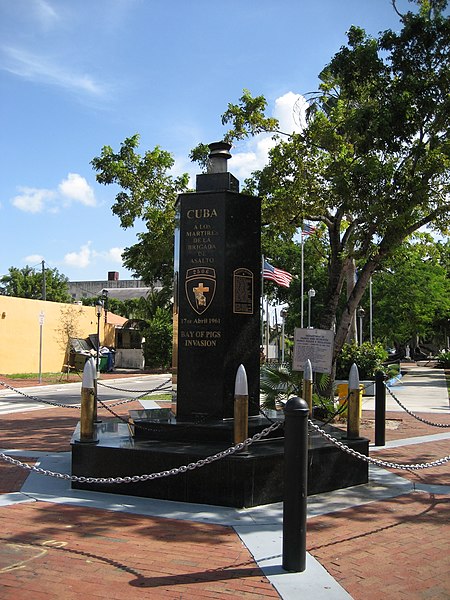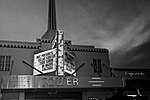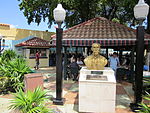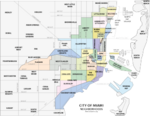Bay of Pigs Monument
1971 establishments in FloridaBuildings and structures in MiamiCold War military history of the United StatesCuban-American culture in MiamiCuba–United States military relations ... and 3 more
Florida stubsMonuments and memorials in FloridaOutdoor sculptures in Florida

The Bay of Pigs Monument is a monument in honor of the fallen of the Bay of Pigs Invasion in Little Havana, Miami, Florida. Their names are engraved on the monument, and there is an eternal flame at the top. The monument was dedicated on April 17, 1971, by "several hundred Cuban exiles" as well as Miami Mayor David T. Kennedy and then-Senator Lawton Chiles. President Richard Nixon "cabled his best wishes" for the occasion.
Excerpt from the Wikipedia article Bay of Pigs Monument (License: CC BY-SA 3.0, Authors, Images).Bay of Pigs Monument
Southwest 13th Avenue, Miami
Geographical coordinates (GPS) Address Nearby Places Show on map
Geographical coordinates (GPS)
| Latitude | Longitude |
|---|---|
| N 25.765638888889 ° | E -80.216472222222 ° |
Address
Eternal Torch
Southwest 13th Avenue
33145 Miami
Florida, United States
Open on Google Maps







